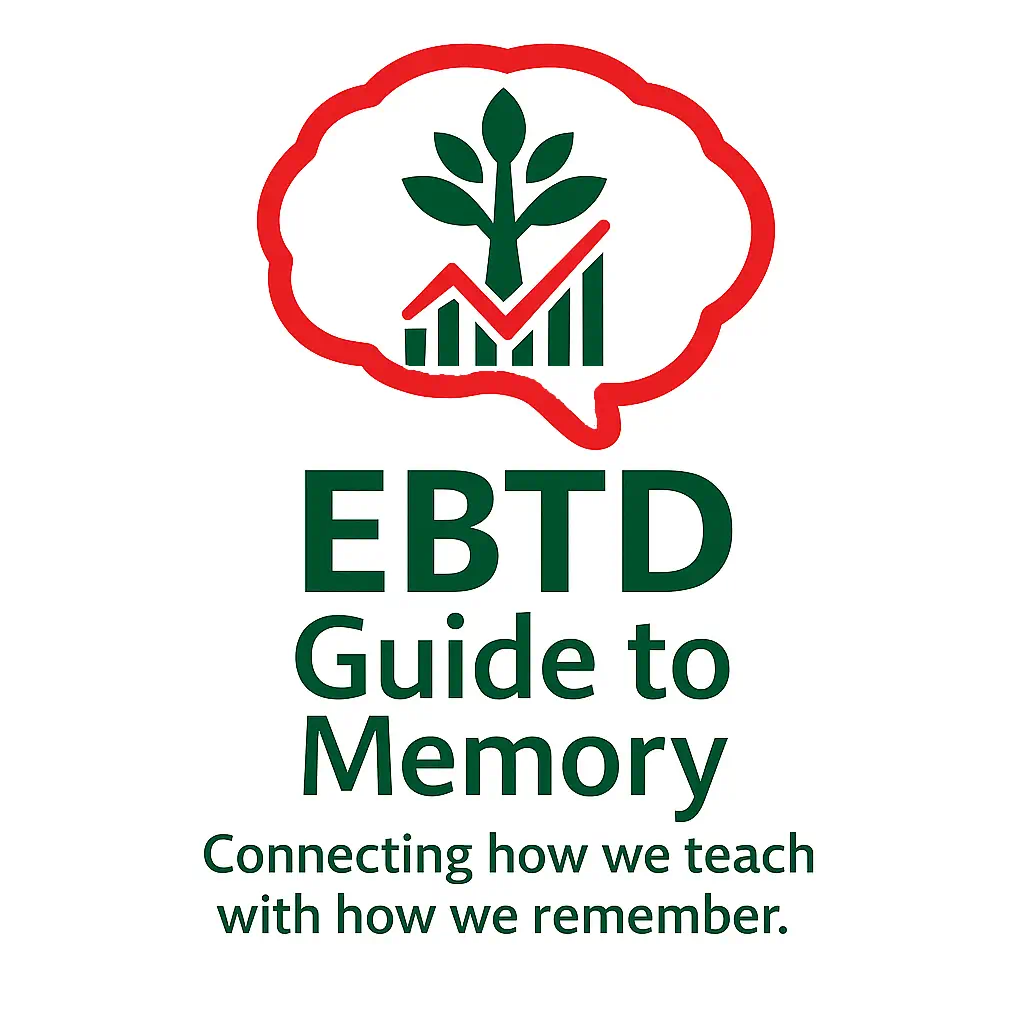
EBTD Research Hub · Bangladesh (BD)
EBTD Guide to Memory
Connecting how we teach with how we remember
Memory in Learning: Why We Remember and Why We Forget
Everyday hooks
- Why we can sing lyrics we heard once but forget entire training slides.
- Why a smell can trigger memory instantly (context cues).
- Why we forget people’s names right after introductions (attention and encoding).
We remember what we think about, not just what we hear.
The Problem — “Students forget — and so do we.”
Every teacher knows the feeling: you teach a concept beautifully on Monday, and by Thursday it’s gone. We shake our heads, repeat the lesson, and tell ourselves the class “just needs more practice.”
But forgetting isn’t a sign of failure — it’s a feature of how the brain works. Across Bangladesh, classrooms are filled with teachers explaining, students copying, and everyone hoping that this time the knowledge will stick. Yet within days, much of it fades.
Rote recall dominates. Students rehearse facts for exams, then let them drift away once the paper is over. Teachers reteach entire units, knowing that real understanding never quite took root.
The truth is simple — we’re trying to fight biology.
The Science — Our Brains Are Built to Forget
We remember songs we never tried to memorise, yet forget the names we heard seconds ago. A single smell can bring back a childhood afternoon, yet a week of training slides vanish the moment we return to school.
That’s not laziness or lack of attention. It’s how human memory operates.
In 1885, psychologist Hermann Ebbinghaus mapped what he called the forgetting curve — a steep drop in what we recall just hours after learning. But the good news was hidden in that same curve: each time we retrieve information, the curve flattens. Remembering strengthens memory.
Over a century later, Robert and Elizabeth Bjork showed that struggle is not a problem — it’s the process. When recall feels difficult, the brain is building stronger connections. They called these moments desirable difficulties.
And as Daniel Willingham reminds us, “Memory is the residue of thought.” We remember what we think about, not what we hear.
Classrooms that ask students to think — not just listen — make learning last.
The Opportunity — Design Lessons to Align with Memory, Not Fight It
When we understand how memory really works, everything changes:
- We stop seeing forgetting as failure.
- We start designing lessons that help students re-find knowledge instead of just re-hearing it.
- We build practice, recall, and spacing into every week, not just before exams.
The challenge for Bangladesh isn’t that teachers don’t care — it’s that our teaching traditions were never designed with cognitive science in mind.
Now we have the evidence. The question is: how can we use it?
Hear from the Team
In this episode of The Deep Dive, the EBTD team step back and take listeners behind the scenes of what drives their work — translating global evidence into real classroom change in Bangladesh. From the Research Hub and BRIDGE framework to exam board comparisons, assessment design, and professional development, the discussion explores how each part of the EBTD ecosystem fits together. The conversation is honest and practical: less about slogans, more about substance. It’s an open look at how EBTD was built — for Bangladeshi teachers, by people who understand their classrooms, their pressures, and their potential.
Overview of This Series
The EBTD Guide to Memory is a practical, evidence-based framework for teachers, tutors, and leaders in Bangladesh. It explores how memory works, why students forget, and what schools can do to make learning stick.
1. How Memory Works
The science behind remembering — from encoding to retrieval.
2. Designing Lessons for Durable Memory
How to plan teaching that lasts.
3. Helping Students Regulate Their Memory
Teaching pupils to manage their own recall and study habits.
4. Memory, Curriculum & Assessment Alignment
Ensuring learning is revisited and rewarded over time.
5. Implementation & Culture
How leaders and teachers can embed memory-friendly practice across a school.
Call to Action
If you’d like to explore the full guide, download the EBTD Quick Guide to Memory or join our monthly newsletter for research-backed tips and free tools for teachers across Bangladesh (BD).
Join the EBTD NewsletterMonthly insights, classroom tools, and training updates — no spam, just what helps.
Research Cited
- Ebbinghaus, H. (1885). Memory: A Contribution to Experimental Psychology.
- Bjork, R. & Bjork, E. (1992–2011). Desirable Difficulties and the New Theory of Disuse.
- Willingham, D. (2009). Why Don’t Students Like School?
- Baddeley, A. & Hitch, G. (1974). Working Memory Model.
- Education Endowment Foundation (2023). Cognitive Science Approaches in the Classroom.
Cross-Links to Other EBTD Series
- BRIDGE Framework → Teaching & Learning Cluster: understanding classroom foundations.
- Classroom Talk → Using dialogue to strengthen retrieval and meaning-making.
- Guide to Better Assessment → Memory as evidence of true learning, not rote recall.
Reflection Prompt
What kinds of learning do your students never forget — and why?
What might that tell us about how memory really works?
